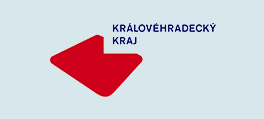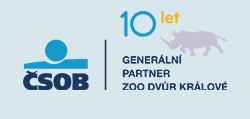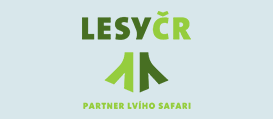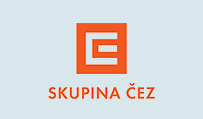Internship for the students of High School of Information Science and Services at Dvur Kralove Zoo
Date: 08.06.2012
In the 2009-2010 school year, there was an internship for students of High School of Information Science and Services. Underway at Dvur Kralove Zoo, the activity was managed by education officer Tomas Hajnys and a school teacher Stanislava Karbanova, with 30 students involved. They were split in two groups attending the zoo every other Tuesday between 8.00 a.m. and 2.00 p.m. The main aim of the internship for the students was to gain basic experience as guides. The Darwin’s Centre became the base grounds for the students to meet live programme animals and use educational items such as taxidermy specimens, skeletons, skins, feathers, skulls, eggs etc. The students were guided how to gain practical knowledge of the communication with the visitor including the use of audio/video systems. During the presentations, the students were also taught how to use visual aids. The students were encouraged to work on their own or in groups almost at every training session. While in the zoo grounds, they were studying specific animal species and then presenting the knowledge gained to the remainder of the class. To visualize their progress, Zdenek Cermak was recording their presentations/guiding tours using a camcorder. This was being done twice to able to see the progress of guiding skills of the students. In the 2011-2012 school year, there was another internship for the grade 2 students of Secondary School of Information, this conducted by Tomas Hajnys.
Over the 2009-2010 school year, there was an internship for the grade 1 students of the Tourism course at the High School of Information Science and Services. Underway at Dvur Kralove Zoo, the activity was managed by the author of this paper along with Stanislava Karbanova, a female teacher, with 30 students involved. They were split in two groups attending the zoo every other Tuesday between 8.00 a.m. and 2.00 p.m. over the period from 14 September 2009 to 22 June 2010.
The main aim of the internship for the students was to gain basic experience as guides and to become familiar with the operation of the zoological park to such a level so that to be able to present the zoo as an important tourist site of Hradec Kralove Region in their future work within the industry.
The Darwin’s Centre became the base grounds for the students to meet live programme animals and learn about natural products such as taxidermy specimens, skeletons, skins, skulls, eggs and the like. Thanks to the Euroregion Glacensis’ project called “Zoo as a School”, the Darwin’s Centre is a great facility to demonstrate many a range of phenomena using multimedia presentations and video records.
In addition to learning about the history of the zoo, animal houses and enclosures, the students were guided how to acquire practical skills of communication with the visitor including the use of audio and video equipment. During the presentations, the students were also being taught how to use 3D educational items, whilst being encouraged to work on their own or in groups almost in every training session. While in the zoo grounds, they were studying specific animal species and then presenting the knowledge gained to the remainder of the class. To visualize their progress, Zdenek Cermak was recording their presentations using a camcorder, this being done twice, with the students then able to see how they did as they were learning. The first recording was made on launching the course at the Darwin’s Centre when the students were talking about animals for the first time, whilst the second footage was taken during their final exam. This way each student was able to see themselves during their presentation on a large screen and study their flaws and errors to improve. The jury included teachers as well as other students.
During the internship, the students gained knowledge about the zoo and its operations, whilst learning animal facts that are necessary to do the guide’s job properly. Basic education tools comprised the current Zoo Guide and Animals of East Bohemian Zoological Garden Dvur Kralove nad Labem, a book written by Monika Petrikova-Ptackova. Student’s homework was to learn about a specific group of animals, with watching a presentation, observing the animal, filling the applicable worksheet and then presenting their knowledge to the others, either by themselves or in groups, being their task at the subsequent session. The next time they arrived, there was a short test to examine their skills. The internship was made more attractive by a field-training lesson guided by Slavka Dvorakova, a student of Faculty of Natural Sciences at the Charles University, Prague, this taking place on 13 April. Each of the internship sessions was taking place twice for each group as follows: Session schedule
Session I
Registration, safety at the zoo, necessary items - shoes, clothes, pen, camera, binoculars
Animal observation in groups - Zebras, Buffalos, Giraffes, Antelopes and Rhinos
Presentation of the results in groups.
Introduction to the Darwin’s Centre, the animals and the general objective of the internship. Hoofed mammals and birds - observation of the animals in large outdoor enclosures and in the safari park using binoculars
Presentation: History of Dvur Kralove Zoo Homework - paper about directors of Dvur Kralove Zoo
Session II
Scavenger hunt - introduction to the animal houses and the zoo in general
Evaluation of the scavenger hunt
The African Savannah - presentation, watching elephants, filling worksheets
Working in groups - browsing/grazing animals, predators, scavengers African Savannah and Giraffes worksheets & evaluation
Working in groups: hyraxes - common traits with elephants, mammoths, skull, leg and elephant tusks, poaching in elephants
Out of scenes tour (rhinos, giraffes)
Homework - learning about primates (gorilla, chimpanzee, orangutan)
Session III
Small animal fact test Primates - presentation and quiz
Movie: mountain gorillas in Congo and research on chimps in zoos
Out of scenes tour - primate house
Worksheets on primates
Homework - learning about carnivores (felines, viverrids, canines, hyenas and bears)
Session IV
Small animal fact test - primates
Analysing chimp, gorilla and orangutan traits, evaluation of the worksheets on primates
Presentation on carnivores - felines, canines, hyenas and viverrids
Studying carnivores skins at the Darwin’s Centre
Team work - felines, canines, hyenas and viverrids
Movie - Felines, Canines
Homework - learning about giraffes
Session V
Small animal fact test
Presentation - Giraffes
Out of scenes tour - Reticulated Giraffes Hands-on session - giraffes, natural products
Worksheets on giraffes & evaluation Primates - presentation and quiz
Homework - learning about odd-toed ungulates (rhinos, zebras)
Session VI
Small animal fact test - carnivores
Analysing feline, canine and hyena traits, evaluation of the worksheet on carnivores
Presentation: odd-toed ungulates - rhinos & Returning Black Rhinos to Mkomazi movie, presentation - zebras & donkeys Skins of rhinos and zebras (stripes), skulls of rhinos and zebras at the Darwin’s Centre
Team work - rhinos, Grevy Zebra, Mountain Zebra, Plain Zebra
Movie - Zebras, the Savanna
Worksheets on rhinos
Homework - learning about Proboscidea and even-toed ungulates save antelopes, i.e. bovines, goats, sheep and camels
Out of scenes tour - zebra
Session VII
Small animal fact test - rhinos
Analysing rhinos (Black/White/Indian) and zebras (Grevy’s/Hartmann’s/Plain)
Evaluation of the rhino worksheet
Presentation: elephants - Proboscidea, even-toed ungulates save antelopes, i.e. bovines, goats, sheep and camels
Skin and bones of the elephant at the Darwin’s Centre
Team work - African and Indian Elephant, bovines, goats, sheep and camels
Movie - Elephants
Elephant worksheets & homework: complete the sheet and learn about reptiles and birds Out of scenes tour - the male elephant facility at the African Savannah house
Session VIII
Small animal fact test - elephants
Analysing the African Elephant and Indian Elephant, bovines, goats, sheep and camels, evaluation of the elephant worksheet
Presentation - field training in ethology Team work using worksheets - observation of the behaviour of mammals, birds and reptiles
Movie - Reptiles, Birds
Worksheets - birds, reptiles
Homework: complete the sheet and learn about antelopes; learning the narration for Evening Safari rides
Out of scenes tour - Bird World & Water Worlds
Session IX
Small animal fact test - reptiles and birds
Homework: evaluation of the worksheets, reptiles and birds
Presentation: antelopes - bushbucks, bonteboks, wildebeests, true antelopes, impalas, oryxes, reedbucks and waterbucks
Observation of hoofed mammals in seasonal enclosures and in the safari park
Rehearsal for guided tours, the subject specified by drawing lots (classic zoo, seasonal enclosures, safari park) on the basis of the narration for the
Evening Safari A safari park ride.
Session X
Final evaluation of the young guides, the subject specified by drawing lots (classic zoo, seasonal enclosures, safari park)
Grading of the performance.
Evaluation of the work done throughout the year. Farewell.
As they were undergoing the field-training module, each of the students successfully managed their guiding duty at each of the animal houses and learned to communicate at a very advanced level. At the end of the internship, each student passed their final exam and was graded accordingly. In September and October, at the end of the main season, the students were even guiding African Safari rides. Some of them even learned so much and reached such a high level of communication skills that they might become professional zoo guides in the future. In the 2011-2012 school year, there was another internship for the grade 2 students of Secondary School of Information, this conducted by the author.







